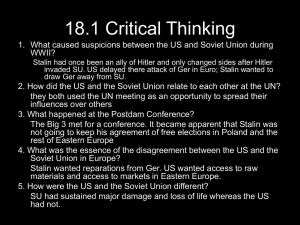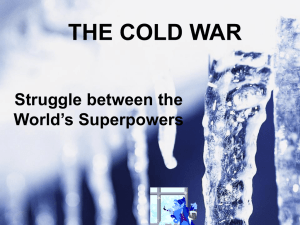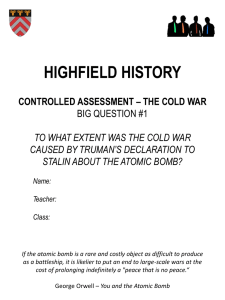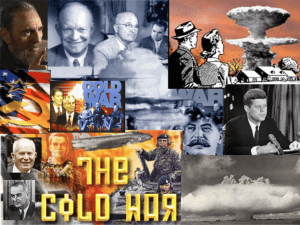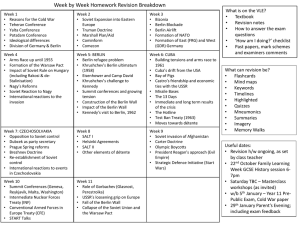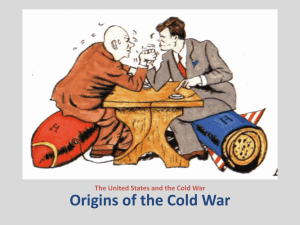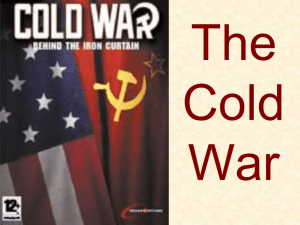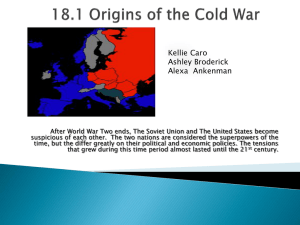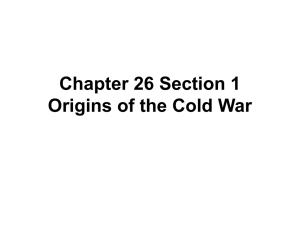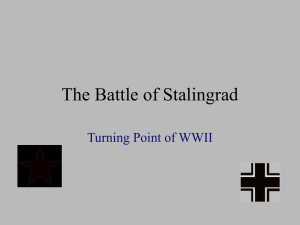What were the causes, events and results of the Berlin Crisis? C
advertisement
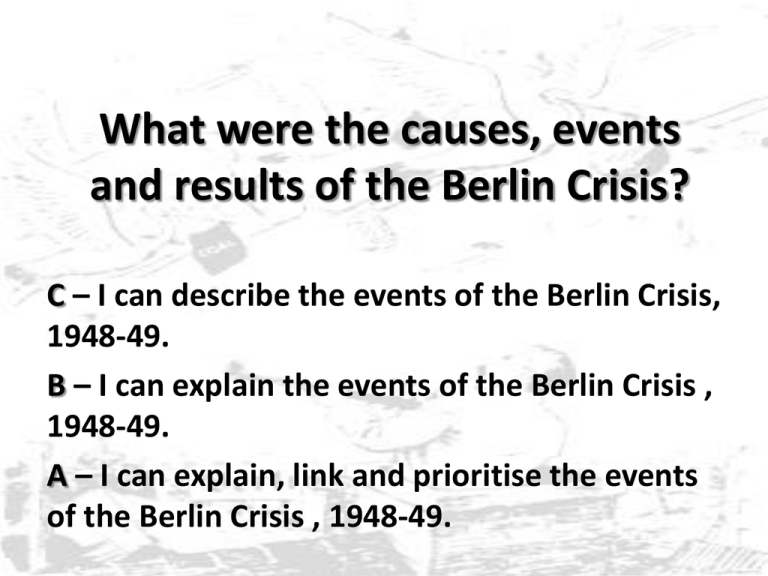
What were the causes, events and results of the Berlin Crisis? C – I can describe the events of the Berlin Crisis, 1948-49. B – I can explain the events of the Berlin Crisis , 1948-49. A – I can explain, link and prioritise the events of the Berlin Crisis , 1948-49. Why did Stalin blockade West Berlin? • Long term causes – agreement to divide Berlin at Potsdam. • West Berlin was an area of Capitalism within Communist territory – bad for Soviet propaganda. • Berlin was ‘gap’ in the iron curtain. Many East Germans tried to escape communism by getting into West Berlin. • The Soviets argued that Western spies were getting into communist controlled area through West Berlin. Why did Stalin blockade West Berlin? • The Allies encouraged economic recovery in their zones, while Stalin wanted to weaken Germany to prevent future attack. • Western zones received lots of Marshall Aid. Events of the Crisis 24 June 1948 – Stalin accused the West of interfering in the Soviet zone. He cut off road, rail and canal traffic. Stalin was trying to force the allies to pull out. June – Western powers announced plans to give Western Germany its own currency. The Soviet Union struck back and announced that the ‘Ostmark’ would be the currency in the East. 28 June – The Allies began airlifting supplies into West Berlin. Planes flew day and night to strict schedules. Stalin even tried to block the air route with weather balloons. B29 bombers, capable of carrying the Atom Bomb were sent to Britain as a warning to Stalin. September – Planes were flying in 4600 tonnes of supplies each day. Supplies included food, clothes, oil, building materials. 12 May 1949 – Stalin called off the blockade. West Berliners celebrated in the streets. Results of the Crisis • Increased East – West rivalry. • Confirmed the division of Germany and Berlin for the long-term – West Germany and East Germany were formally separated within days of the crisis ending. • Led to the creation of NATO. • Truman saw the crisis as a great victory. What was/is NATO? • After the Berlin Crisis Truman was more committed than ever to containing communism. • Truman knew that, even joined together, the countries in Western Europe were not strong enough to stop communism and needed support. • NATO (North Atlantic Treaty Organisation was signed in April 1949 as a defensive alliance to prevent Soviet expansion. What was the Warsaw Pact? • A rival to NATO – set up by Stalin who saw NATO as an aggressive alliance against the Soviet Union. • Military alliance of 8 nations led by Soviet Union. • Members pledged to support each other if attacked. Cold War Developments – 1949-55. • 1949 – Communists take control of China. In response the USA developed ‘Domino Theory – the belief that if one country in Asia had become communist, many others could follow. • 1949 – Soviet Union develop atomic bomb. • 1950 – 55 – Korean War after Communist North invades democratic South Korea. • McCarthyism in USA – anti-Communist hysteria. Arms Race • USA and Soviet Union both poured money into developing arms. Both sides suspected the other of trying to build enough weapons to make a ‘First Strike’ and prevent the other side firing back. • Truman ordered the development of the ‘HBomb’ (Hydrogen bomb). Stalin responded and both countries tested H-bombs within months of each other in 1953. Stalin’s Death • Stalin died in 1953. For two years no firm leader emerged. • Eventually Nikita Khrushchev became leader and begun a policy of peaceful co-existence with the West. Exam Questions • Explain why there was a crisis over Berlin in 1948-49. (12 marks, 15 minutes, POINT, EXP, LINK X3, CONCLUSION) • Briefly explain the results of the Berlin Crisis, 1948. (6 marks, 8 minutes, POINT, EXP X3) • Describe one feature of NATO. (2 marks, 2 minutes, POINT, EXP) • Describe one feature of the Warsaw Pact. (2 marks, 2 minutes, POINT, EXP)
